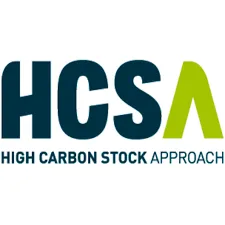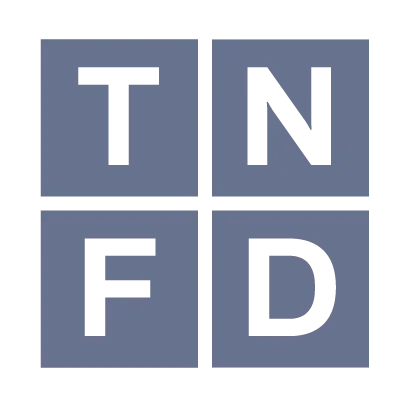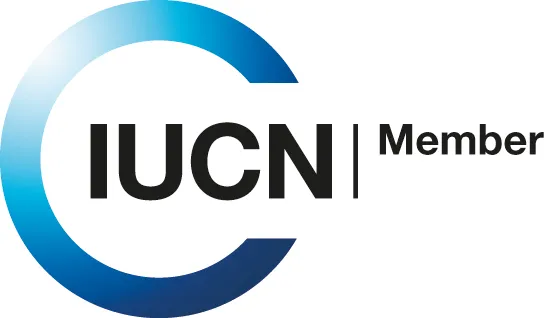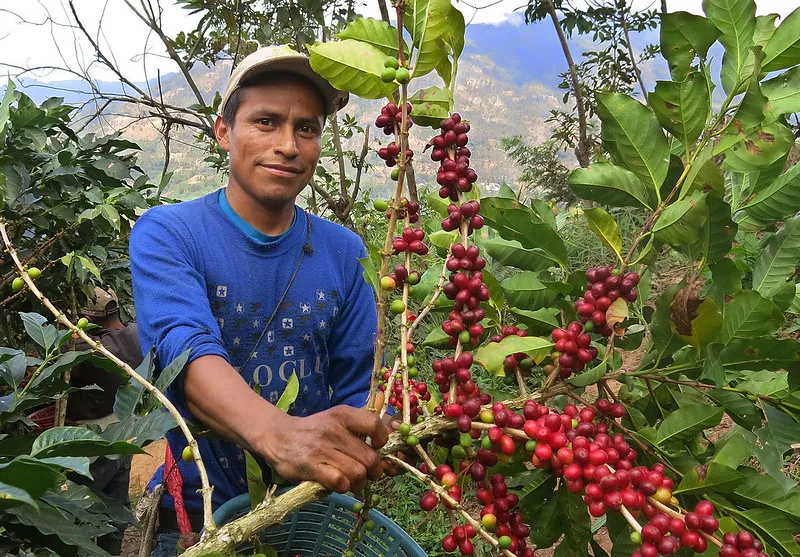
Certification
For more than 20 years, the HCV approach has been used by voluntary sustainability standards as a safeguard to protect people and nature where commodities are produced.
Sustainable Development Goal 15 – Life on Land
Protect, restore, and promote sustainable use of terrestrial ecosystems, sustainably manage forests, combat desertification, and halt and reverse land degradation and halt biodiversity loss.
For more than 20 years, the HCV Approach has been used by voluntary sustainability standards as a safeguard to protect species, ecosystems and nature’s contribution to people where commodities are produced.
Across the World, multiple voluntary sustainability standards (VSS) are using the HCV Approach to strengthen their efforts to preserve key values that could occur through conversion of natural vegetation to plantation forestry, agriculture, or aquaculture.
The Network supports VSS by:
- Gaining a clear understanding of their objectives and proposing HCV criteria and indicators accordingly.
- Designing HCV tools and frameworks.
- Providing learning opportunities and developing outreach materials.
- Developing and testing monitoring and implementation procedures.
A risk-based lens
An effective way to minimize the risk of damaging or destroying High Conservation Values (HCVs) is to steer development (such as agricultural expansion) into areas already under use, or to convert only degraded areas where the likelihood of presence of HCVs is lower. Where expansion takes place on already cultivated or degraded land, potentially present HCVs can be addressed through easy-to-implement mitigation measures. However, in areas where conversion and development are likely to have negative impacts on HCVs, more in-depth assessments are required.
A risk-based lens to identification (assessment) of High Conservation Values (HCVs) can help to distinguish between sites with high and low probability of presence of HCVs. The Network is working with VSS to develop user-friendly risk-based tools to identify the level of risk associated with conversion in various settings.
Standards using the HCV Approach
- Aluminium Stewardship Initiative (ASI)
- Aquaculture Stewardship Council (ASC)
- Better Cotton Initiative (BCI)
- Bonsucro
- Climate Bonds Standard
- Climate, Community and Biodiversity Alliance (CCBA)
- Equitable Origin
- Fairtrade
- Floraverde Sustainable Flowers
- Forest Stewardship Council (FSC)
- Green Gold Label
- International Sustainability and Carbon Certification (ISCC)
- Krav
- Lasting Initiative for Earth (LIFE)
- ProTerra Foundation
- Rainforest Alliance – UTZ
- REDD+ Social and Environmental Standard
- Roundtable on Responsible Soy Association (RTRS
- Roundtable on Sustainable Biomaterials (RSB)
- Roundtable on Sustainable Palm Oil (RSPO)
- Soil Association
Examples of our work
Maintaining and enhancing HCVs has been central to the Forest Stewardship Council (FSC) standards. Forest managers must boost their efforts to find and safeguard environmental and social values in forest areas and treat any threat to HCVs as a threat of severe or irreversible damage. Engaging with indigenous and local communities that rely on HCVs is also a staple for FSC certification. The wood used in products with the FSC Mix labeled, must not be linked with the destruction of HCVs.
As part of its principles and criteria, the Roundtable on Sustainable Palm Oil (RSPO) requires palm oil growers to identify, manage, and monitor HCVs. RSPO’s Principle 7 dictates that land clearing must not cause deforestation or damage to any area required to protect or enhance High Conservation Values.
Bonsucro leverages the HCV approach to assess the impacts of sugarcane production on biodiversity and ecosystems services, as well as social values.
Better Cotton worked with the HCV Network on revising its principles and criteria to include the HCV approach and biodiversity management tools into the Better Cotton Standard, and to make them more accessible for smallholder farmers. The HCV Network also collaborated with Better Cotton Initiative to develop simple tools for cotton farmers to map and maintain biodiversity on and around their farms.
Fairtrade uses the HCV approach as part of its Standards, and the HCV Network is currently collaborating with Fairtrade to provide producers – many of whom are smallholder farmers – with simple guidance to identify and maintain HCVs on and around their farms.
Companies that source Rainforest Alliance certified products are committing to protect HCVs. The HCV tools developed by the HCV Network in collaboration with RA for their newly updated Standard, is used by farmers to understand threats, maintain values, and how to put in place management and monitoring plans for these HCVs.
For more information, please contact secretariat@hcvnetwork.org
Report Evaluations
Complaints & Investigations
For more information, click here.

Related Content
Rainforest Alliance’s revamped standard to strengthen protection of High Conservation Value areas
Read MoreOur Partnerships
Alongside many global initiatives, our work with partners promotes practices that help meet the global Sustainable Development Goalsand build a greener, fairer, better world by 2030.


Femexpalma
In April 2022, FEMEXPALMA and the HCV Network signed a 5-year cooperation agreement to promote sustainable production of palm oil in Mexico. FEMEXPALMA is a Mexican independent entity that represents palm production at the national level and promotes the increase of productivity in a sustainable way.
With global markets becoming stricter, for Mexican producers to be able to export to key markets such as the European Union, they must meet strict requirements such as certification by the Roundtable on Sustainable Palm Oil (RSPO). To be certified by RSPO, the HCV Approach must be applied prior to the establishment of any new oil palm plantations. With this cooperation agreement, the HCV Network will support FEMEXPALMA’s members and allies to design better strategies to identify, manage and monitor High Conservation Values and support smallholders to achieve RSPO certification and implement good agricultural practices.


High Carbon Stock Approach
The High Carbon Stock Approach (HCSA) is an integrated conservation land use planning tool to distinguish forest areas in the humid tropics for conservation, while ensuring local peoples’ rights and livelihoods are respected.
In September 2020, HCV Network and the HCSA Steering Group signed a five-year Memorandum of Understanding (MoU) to strengthen their collaboration to conserve forests and uphold community rights in tropical forests. The HCS and HCV Approaches are cornerstones of corporate no deforestation and conservation commitments, and increasingly for actors working at different scales. The collaboration aims to further support effective implementation of these commitments through increased uptake of the HCV and HCS tools.
Through this MoU, HCSA and HCVRN are pursuing two main strategic goals:
- Strive to promote the application of the two approaches in tropical moist forest landscapes and explore further opportunities for collaboration.
- Ensure that, where the two approaches are applied together, this happens in a coordinated, robust, credible, and efficient manner, so that HCS forests and HCVs are conserved, and local peoples’ rights are respected.


World Benchmarking Alliance
From May 2022, the HCV Network is an ally at the World Benchmarking Alliance (WBA). WBA is building a diverse and inclusive movement of global actors committed to using benchmarks to incentivise, measure, and monitor corporate performance on the SDGs, and will assess and rank the performance of 2,000 of the world’s most influential companies against seven systems of transformation by 2023.
The scope of WBA’s circular transformation was expanded to cover nature and biodiversity as recognition of the need for greater understanding, transparency and accountability of business impact on our environment. The WBA Nature Benchmark was launched in April 2022, which will be used to rank keystone companies on their efforts to protect our environment and its biodiversity. As HCV Areas are recognised as key areas important for biodiversity, companies that publicly disclose their actions to identify and protect HCVs will contribute to the assessment of their performance against the benchmark.


Taskforce on Nature-related Financial Disclosures - TNFD
The Taskforce on Nature-related Financial Disclosures (TNFD) is a global, market-led initiative, established with the mission to develop and deliver a risk management and disclosure framework for organizations to report and act on evolving nature-related risks, with the aim of supporting a shift in global financial flows away from nature-negative outcomes and toward nature-positive outcomes.
In April 2022, the HCV Network joined the TNFD Forum. The TNFD Forum, composed of over 400 members, is a world-wide and multi-disciplinary consultative network of institutional supporters who share the vision and mission of the task force.
By participating in the Forum, the HCV Network contributes to the work and mission of the taskforce and help co-create the TNFD Framework which aims to provide recommendations and advice on nature-related risks and opportunities relevant to a wide range of market participants, including investors, analysts, corporate executives and boards, regulators, stock exchanges and accounting firms.


Aquaculture Stewardship Council
The Aquaculture Stewardship Council (ASC) is the world’s leading certification scheme for farmed seafood – known as aquaculture – and the ASC label only appears on food from farms that have been independently assessed and certified as being environmentally and socially responsible. In 2021, the HCV Network and ASC formalised their collaboration through a Memorandum of Understanding (MoU). The MoU represents the first step in a fruitful relationship aimed at conserving HCVs in aquaculture. Although, existing guidance on the use of the HCV Approach currently focuses mainly on forestry and agriculture, the HCV Approach is however generic, and in principle also applicable to aquatic production systems. Through this MoU, this is recognised by the Aquaculture Stewardship Council (ASC) in their ASC farm standard, in which the protection of HCV areas is mentioned in the context of expansion


Accountability Framework Initiative
The Accountability Framework initiative (AFi) is a collaborative effort to build and scale up ethical supply chains for agricultural and forestry products. Led by a diverse global coalition of environmental and human rights organizations, the AFi works to create a “new normal” where commodity production and trade are fully protective of natural ecosystems and human rights. To pursue this goal, the coalition supports companies and other stakeholders in setting strong supply chain goals, taking effective action, and tracking progress to create clear accountability and incentivize rapid improvement. In July 2022, the HCV Network joined AFi as a Supporting Partner. AFi Supporting Partners extend the reach and positive impact of the AFi by promoting use of the Accountability Framework by companies, industry groups, financial institutions, governments, and other sustainability initiatives, both globally and in commodity-producing countries.


Biodiversity Credit Alliance
The Biodiversity Credit Alliance (BCA) is a global multi-disciplinary advisory group formed in late 2022. Its mission is to bring clarity and guidance on the formulation of a credible and scalable biodiversity credit market under global biodiversity credit principles. Under these principles, the BCA seeks to mobilize financial flows towards biodiversity custodians while recognising local knowledge and contexts.
The HCVN joined the BCA Forum in August 2023 to learn more from the many organizations already coming together to find effective pathways to opening up credit-based approaches, and how to contribute our knowledge and experience of years of working in a practical way, often with global sustainability standards and their certified producers, to protect what matters most to nature and people.
.webp)
.webp)
Nature Positive Forum
The Nature Positive Initiative is a group of stakeholders coming together to find ways to unlock success and achieve Nature Positive - a global societal goal defined as ‘halt and reverse nature loss by 2030 on a 2020 baseline, and achieve full recovery by 2050’, in line with the mission of the Kunming-Montreal Global Biodiversity Framework.
Core work includes preserving the integrity of ‘Nature Positive’ as a measurable 2030 global goal for nature for business, government, and other stakeholders, and providing the tools and guidance necessary to allow all to contribute. The initiative also advocates for the full implementation of the Kunming-Montreal Global Biodiversity Framework by governments and other stakeholders.


IUCN
IUCN is a membership Union uniquely composed of both government and civil society organisations. It provides public, private, and non-governmental organisations with the knowledge and tools that enable human progress, economic development, and nature conservation to take place together.
Created in 1948, IUCN is now the world’s largest and most diverse environmental network, harnessing the knowledge, resources and reach of more than 1,400 Member organisations and around 15,000 experts. It is a leading provider of conservation data, assessments, and analysis. Its broad membership enables IUCN to fill the role of incubator and trusted repository of best practices, tools, and international standards.
IUCN provides a neutral space in which diverse stakeholders including governments, NGOs, scientists, businesses, local communities, indigenous peoples’ organisations, and others can work together to forge and implement solutions to environmental challenges and achieve sustainable development.
Working with many partners and supporters, IUCN implements a large and diverse portfolio of conservation projects worldwide. Combining the latest science with the traditional knowledge of local communities, these projects work to reverse habitat loss, restore ecosystems, and improve people’s well-being.

Get Involved
Our Mission as a network is to provide practical tools to conserve nature and benefit people, linking local actions with global sustainability targets.
We welcome the participation of organisations that share our vision and mission to protect and enhance High ConservationValues and the vital services they provide for people and nature. By collaborating with the Network, your organisation can contribute to safeguarding HCVs while gaining valuable insights and connections that support your sustainability goals.
We are seeking collaborative partners to help expand and enhance our work, as well as talented professionals who can join the growing Secretariat team, and for professionals who can contribute to the credible identification of High Conservation Values globally.
Join us in securing the world’s HCVs and shaping a sustainable future.



